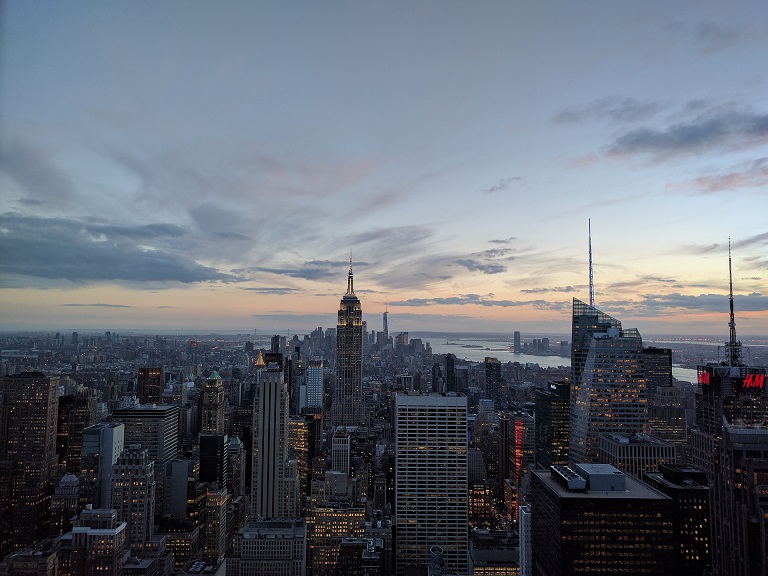
The Fountainhead, part 1, chapter 8
Jobless again, Roark goes back to pounding the pavement. He makes a list of architects – the ones “whose work he resented least” – and methodically works his way through it, applying to one firm after another. But at each one, he meets with rejection (not surprising considering his interview technique):
It was not a judgment passed upon his merit. They did not think he was worthless. They simply did not care to find out whether he was good. Sometimes, he was asked to show his sketches; he extended them across a desk, feeling a contraction of shame in the muscles of his hand; it was like having the clothes torn off his body, and the shame was not, that his body was exposed, but that it was exposed to indifferent eyes.
Not to be pedantic, but if these architects asked to see his sketches, they did pass judgment on his merit, didn’t they?
As the unsuccessful days run together into weeks and then months, Roark sits at his window and smokes. He feels a sense of threat in the air all around him, a nameless sense of hostility “rising from the city below, as if each window, each strip of pavement, had set itself closed grimly, in wordless resistance”. The text asserts that this doesn’t bother him, because he’s implacable and emotionless like all Randian protagonists. Nevertheless, it seems the constant rejection takes a toll:
As the summer months passed, as his list was exhausted and he returned again to the places that had refused him once, Roark found that a few things were known about him and he heard the same words — spoken bluntly or timidly or angrily or apologetically — “You were kicked out of Stanton. You were kicked out of Francon’s office.” All the different voices saying it had one note in common: a note of relief in the certainty that the decision had been made for them.
As always, Rand’s villains know they’re the villains, whether they admit it or not. She writes as if all the other architects are afraid to acknowledge Roark’s secret greatness and need a plausible excuse not to hire him.
But these aren’t excuses! They say something about his basic fitness to be an employee. Roark was expelled from school for refusing assignments and fired from his last job for insubordination. His bad behavior isn’t an isolated incident, but a pattern. That’s the best possible reason not to hire someone: because they won’t do the job you’re paying them for.
If I were the interviewer, to give him even a chance, I’d want a very good explanation of what lessons he’s learned and what he’s going to do differently in the future. But Roark hasn’t learned any lessons and won’t behave differently in the future, as I’m sure he would confirm if anyone asked him.
The only respite Roark has from the long string of rejections is when he visits Henry Cameron, who’s convalescing at his retirement home in New Jersey. Cameron again offers to write him a recommendation – “Want me to give you a letter to one of the bastards?” – but Roark refuses. Instead, they pass the time sitting on the porch and gazing at the distant skyline of New York:
When Roark came to him, Cameron spoke of architecture with the simple confidence of a private possession. They sat together, looking at the city in the distance, on the edge of the sky, beyond the river. The sky was growing dark and luminous as blue-green glass; the buildings looked like clouds condensed on the glass, gray-blue clouds frozen for an instant in straight angles and vertical shafts, with the sunset caught in the spires…
We saw this in Atlas Shrugged as well, this idolizing New York City as a sacred temple of human industry. It’s not surprising that Ayn Rand loved the New York skyline; it’s probably the first sight she ever had of America.
But while she habitually gave her protagonists the same opinions as herself, in this case it doesn’t make sense. Why does Roark feel that New York City is deserving of his admiration?
After all, isn’t this the city that was built by evil classical architects? Isn’t it the city that spurned his mentor Henry Cameron and consigned him to a miserable retirement? Isn’t it the city, we were just told, that emanates a sense of implacable hostility toward him and all his works?
Remember, in The Fountainhead, Guy Francon’s absurdly ornate Frink Building in lower Manhattan is famous and beloved. It’s widely considered “the best building of the city“. Meanwhile, Henry Cameron’s crowning achievement, the Dana Building, is half-empty and largely ignored (“New Yorkers seldom looked at the Dana Building”), if not outright hated. And while Francon is the worst of the lot, we just saw that there are no architects still working in New York whom Roark likes or respects. Every last one of them is hopelessly corrupted by classicism.
By their standards, Roark and Cameron should consider New York City a monument to conformity and philistinism. Rather than something to admire while they smoke and reminisce, the sight of its twinkling skyline from Cameron’s porch should feel like further mockery. It’s one more symbol of how the world has rejected them, and like John Galt in Atlas Shrugged, the only pleasure they should derive from it is the thought of how they’ll one day erase it from the earth.
Other posts in this series: